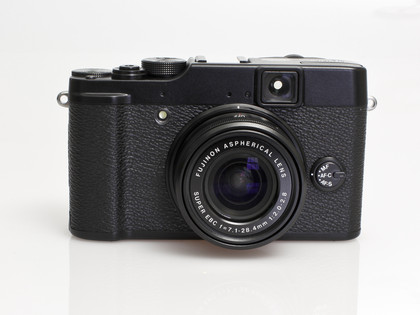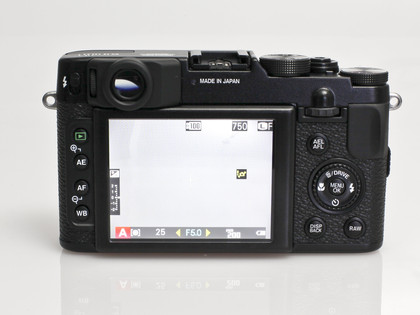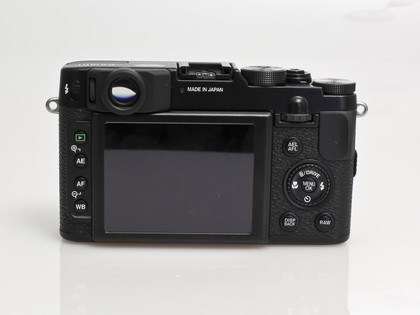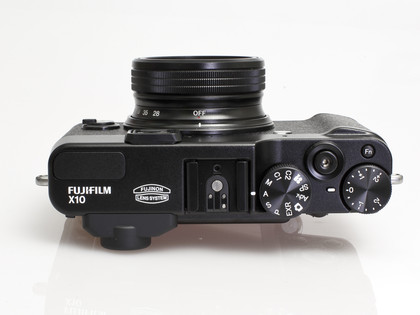Why you can trust TechRadar
Mark Sparrow's long-term test
TechRadar prides itself on producing some of the most comprehensive digital camera reviews with the latest state-of-the-art testing software and rigorous optical tests to measure any given camera's performance with great precision.
We also take great care to reflect the real-world experience of using the camera being reviewed. Gary Wolstenholme did just that with the Fujifilm X10 compact camera, and provided a glowing original review.
We've now tested the camera under extended real-world conditions. The advantage of living with a camera for a whole week and using it as your only camera for an important occasion such as a family trip or a wedding can provide a real insight. And so it was as we packed the Fuji X10 into our rucksack and set off for a week-long break in the Frisian Islands, off the northern coast of Germany.
Since we were travelling light, the Fuji X10 seemed the perfect choice, promising high-quality images in a super compact format but with plenty of manual control and options to enable us to shoot some great views and landscapes.

Without any other camera to fall back on, the Fuji X10 was tested to its limits, since we were determined to get some really good shots.
The good news is that Gary was spot on in his assessment of the Fuji X10 as a thoroughly capable performer in terms of handling, construction and image quality.
However, our week with the camera did turn up a few points worth noting that you might only discover when trying to shoot a panorama on a windswept beach at dawn.
Sign up for breaking news, reviews, opinion, top tech deals, and more.
Handling
First of all, let's talk about the handling. The Fuji X10 is a joy to hold. It fits perfectly in the hand and, even better, it's a camera that you can use to shoot with one hand.
For travel photography, when you often need to grab quick opportunistic shots, that's a real bonus. We use a walking stick, so being able to shoot one-handed is very important.
The Fuji X10 feels so solid and it is such a good-looking camera that we were stopped several times by complete strangers anxious to know exactly what it was.
Another aspect that we particularly appreciated was the large EV compensation dial on the right of the Fuji X10's top-plate: no messing around with fiddly menus trying to get, say, a half-stop increase or decrease in the exposure.

In fact, we'd go so far as to say that the EV dial is one of the Fuji X10's best features. The reason we say this is that the Fuji X10 is a photographer's camera; it's not a point-and-shoot camera if you really want to squeeze all the performance that it has to offer. It's like driving a manual sports car that needs handling, care and skill to get the best from it.
So, if you're used to shooting in P-mode then you really will have to monitor the EV values closely, either using the built-in histogram display or by learning the Fuji X10's response and characteristics.
In general the Fuji X10's controls are really well laid out, and nice touches such as the electronic level gauge made shooting seascapes and horizons far easier.
Performance
The manual zoom with its 28-112mm range is great for most travel photography, but if we were being really picky we'd have preferred a 28-200mm range, since sometimes the Fuji X10 just can't pull you in close enough to get a shot.
For this reason, don't even think about using it for wildlife photography, because you simply won't get the results you're looking for.

The lens itself is great, with very little distortion of any kind, and the wide angle is perfect for shooting two or three shots to stitch together into a panorama. Or if that doesn't appeal, then there is a built-in panoramic function that works remarkably well.
One drawback of the manual zoom is a tendency for it to suck dust inside the lens, and by the end of our week's shoot we did notice a couple of large specks on the inside of the front element.
That's a bit disappointing, but a perhaps a necessary trade off in having such a great analogue feel to taking and framing shots with precision.
As far as colours go, the Fuji X10 is a star performer, with a choice of three colour film simulation modes mimicking Provia, Velvia and Astia emulsions. We largely stuck to the Provia version, since it seemed to offer an excellent balance between subtlety and saturation.

If you shoot in the Fuji X10's raw mode then that probably won't bother you, but because we stuck to shooting JPEGs we wanted the colours to be fairly predictable, since altering things later could be difficult.
The white balance performance is pretty much spot-on in most circumstances, just as Gary reported, so we didn't even need to venture into custom settings or presets, and stuck to shooting away in Auto.
But when it comes to metering we did have a few problems. Perhaps it was those wide-open Frisian skies, but at least 50 per cent of the time we found ourselves making adjustments with the EV compensation dial.
You must be careful when assessing exposures, because the Fuji X10's screen has a tendency to flatter the photographer with some great-looking shots when previewing, but the images look slightly more muted in colour and flatter in exposure when viewed on the computer.

For this reason, we started to use the optical viewfinder far more often, because we didn't wanted to be beguiled by that bright and colourful screen. And since we wear glasses, we found the bright viewfinder much easier to use.
One last point to mention at this juncture is the start up time of the Fuji X10.In our experience, turning the Fuji X10 on by twisting the lens resulted in a wait of a second or two while the sensor adjusted to bright light. This might be due to the Fuji X10's bright f/2.0 aperture, which may take a while to stop down and adjust to brighter light.
On the plus side, that's a handy feature if you're shooting in low light. We did plenty of shooting in the dim light of dusk, but never felt the need to push the ISO higher than the ISO 400 Auto setting, thanks to that lovely wide aperture.
So the Fuji X10 offers great image quality, superb handling and a real engagement with the subject you're photographing thanks to that retro analogue feel.
Results
However, the Fuji X10's battery life can be a bit weedy. Frankly, without a spare battery we wouldn't be confident of going out for a whole day's shooting, and since the recharge time is around four hours, it's probably advisable to carry a spare.
One spare you won't need is a memory card. We took an 8GB SDHC card for the week and still had plenty of space left over, even after 600 shots.

Obviously if you're shooting in raw then you will find that capacity comes down considerably, but the efficiency with which the Fuji X10 stores JPEGs makes it the ideal travelling companion.
At the end of or week we had around 65 processed shots (see the 'More sample images' page of this Fuji X10 review to see some of them) that we were really pleased with - a far higher figure than we could ever hope to achieve with a conventional compact camera.
We loved the fact that we could have similar control and image quality to a DSLR, but without the bulk. Obviously the zoom is limited, but we found that just challenged our creativity and worked within that limitation.
Using the Fuji X10 is like experiencing the thrill of a film camera for the first time, and greatly enhanced our week's photo safari. Like the end of our break, we're sorry to see it go.
